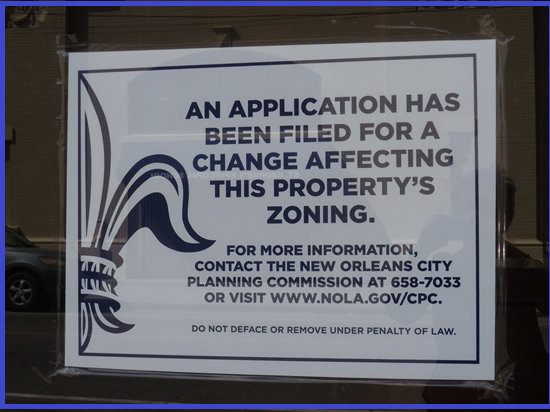| Back to Back Issues Page |
 |
|
Your May Useful Community Plus May 16, 2024 |
See the latest at the Useful Community Development website. This month: Why aren't notices about rezonings and development proposals more helpful?

As I've sometimes said to entry-level planners, when it comes to public notices about proposed rezoning or site development, there is legally required notice and then there is what I call "real notice." Often either state law or your local zoning ordinance requires posting a public hearing notice sign on the property in question, as well as sending a snail mail notice to property owners of record within a certain radius of the property. Five hundred feet is fairly typical. OK, you may reasonably ask whether those two things are effective in letting every curious person know about the public hearing. Answer: It depends. For example, is the sign required to be on the property itself? Would it reach more interested people if the sign were also required on any nearby major roads or at a subdivision or condo complex entrance? Does it make sense that if a 1,000-unit apartment complex is proposed, the exact same radius from the subject property is required as in the case of an accessory dwelling unit at the rear of a large home? If a long-term renter actually lives next door to the subject property, does it make sense that only the landlord (which might be an LLC that lists its address as that of its attorney) receives a mailed notice? In this era of deteriorating postal service quality, does a written notice even make sense at all? Let's say that all of the snail mail reaches the actual residents of the nearby properties. Will people be talking to their neighbors about the pending application as much as if they learned of the proposed action on social media? Does the forbidding and legalistic language of the written notices make people afraid to go to the "public hearing"? People who aren't used to participating in the political process may associate the word "hearing" solely with things like court proceedings and decide they want to stay as far away from this "public hearing" as possible. What can an individual or your neighborhood association do to encourage more "real notice" as compared to "required notice"? Here are five ideas: 1.Ask your planning department to become very aware of the fact that legally required notices are in almost all cases minimums, not maximums. Implore your planning director to increase the radius accordingly for large or highly impactful developments or rezonings. 2. Campaign for neighborhood associations and other community organizations to receive all mailed notices at the same time as other required notices are sent. In fact, encourage a system of an emailed informal heads-up as soon as an application is received or ruled as complete. (It is common practice for planners to mail or send for publication all of the notices for a single planning commission or city council meeting at the same time. But again, in almost all cases, an informally worded and newsy email can be added to the mix without any violation of law.) 3. Encourage your local government to use its website and social media accounts to amplify the notice. This may help address both the problems of notifying interested renters and notifying people who may live outside the required radius. who work within the required radius but don't own property there, and generally civic-minded people who might just be interested. 4. Observe where the local government places the signs on large parcels or those fronting on two or more roads or streets, and ask your town to post multiple signs where it makes sense to do so. 5. Add QR codes to both signs and letters when a website conveys more information about a proposal than the simple notice that someone applied for multi-family zoning.
We enjoyed a good article about finding a place to feel like you belong, which goes beyond the classic description of finding a "third place," such as a coffee house, that is neither home nor work. The writer explains that a third place, where people can find that very important sense of belonging to a group somewhere, can have a very broad definition. This brings hope to even the humblest of communities. In another reminder that we shouldn't let the search for the perfect remedy for a community problem be the enemy of a "pretty good" solution, we also liked an article about how less-than-ideal traffic fixes can still save pedestrian lives. For those of you who live in a place that struggles to attract the developers you think you need, there's no need to despair. Read and absorb the philosophy of the Incremental Development organization, which advocates for citizens becoming their own small-scale developers. This doesn't mean a neighbor should do something foolhardy, but it does mean it's OK to start small--and to remain small, especially if a small or mom-and-pop developer is making modest improvements in your community. Here's an article about easy ways people can exhibit kindness in a neighborhood, but simplistic or not, it's worth figure out how to promote or build onto one of these ideas. Some cities are enhancing their transit systems and improving economic viability by adding stations in locations that were bypassed when the transit systems was initially developed. We will send the next issue of Community Development Plus on a Thursday in June. Reply to this email if you have a comment. For questions, please use the public-facing page to ask your question. We answer them on a page that becomes viewable on our website, but your email address won't show and you can be anonymous if you wish. |
| Back to Back Issues Page |

